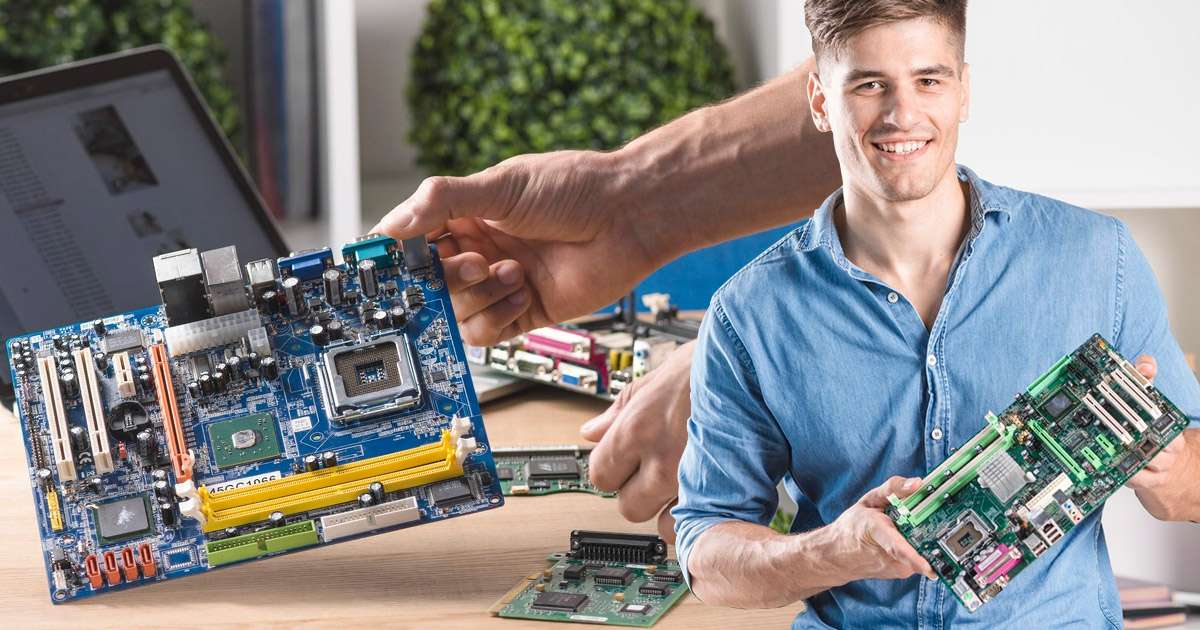Understanding the Red Light on Motherboard: Causes & Solutions

If you’ve ever seen a red light on your motherboard, it’s natural to feel worried. This light, also known as a diagnostic or POST (Power-On Self-Test) LED, can help you figure out hardware issues with your computer, ranging from minor issues to critical hardware failures. Understand what the red light on your motherboard means, why it might be on, and how to fix it.
What is the red light on a motherboard?
The red light on a motherboard is a small LED that is part of the motherboard’s diagnostic system. It is usually found near the CPU socket or in a designated area by the motherboard manufacturer. This light turns on during the POST (Power-On Self-Test) process when you power on your computer.
During POST, the motherboard examines different components, such as the CPU, RAM, and storage devices, to verify they function properly. If these components fail, the red light will remain on, indicating a malfunction.
Why is there a red light on your motherboard?
There are several common reasons why the red light on your motherboard might be on:
- CPU Issues: If the red light is on your motherboard and your computer won’t boot or no display, there might be a problem with the CPU. This could be because the CPU is not properly installed, damaged, or incompatible with the motherboard.
- Memory (RAM) Issues: The red light could also indicate a problem with the RAM if your computer isn’t booting up. This might happen if the RAM modules are not seated properly, faulty, or incompatible with the motherboard.
- Power Supply Issues: If the red light is on and your computer won’t start, the power supply could be the issue. This could be the result of a faulty power supply or a poor connection between the power supply and the motherboard.
- Motherboard Issues: The red light may signal a problem with the motherboard. This might be due to a manufacturing defect, physical damage, or a problem with the BIOS (Basic Input/Output System).
How to detect the problem behind the red light on the motherboard?
Identifying the specific reason behind the red light on your motherboard can be tricky, but here are the steps to diagnose the problem:
- Check the Power Supply: Verify that the power supply unit works correctly. Use a multimeter to check voltages, or try a different PSU if available.
- Inspect the CPU: Uninstall and reseat the CPU, ensuring it is properly aligned and locked. Look for bent pins or physical damage.
- Test the RAM: Take and reseat the RAM modules. Boot with one stick of RAM at a time to isolate any defective modules.
- Examine the GPU: Ensure the graphics card is properly seated in its slot. Try using a different GPU, if possible, to rule out a defective card.
- Disconnect Peripherals: Disconnect all external devices and try to boot. Reconnect them one by one to find any issue peripherals.
How to fix the red light on the motherboard?
Once you’ve identified the potential cause, follow these steps to fix the red light on your motherboard:
Step 1: Power Cycle Your System
Power cycling your system can sometimes resolve temporary issues. Here’s how to do it:
- Turn your computer off and remove it from the power supply.
- Press and hold the power button for 15-20 seconds to discharge any remaining power.
- Reconnect the power and try turning on your system again.
Step 2: Reseat the Components
Loose or improperly connected components are a common cause of the red light on your motherboard. Reseating the CPU, RAM, and GPU can often fix the problem:
- Turn off your computer and unplug it.
- Open the case and carefully remove the CPU, RAM, and GPU.
- Reseat each component, ensuring they are properly aligned and securely connected.
Step 3: Clear the CMOS
Clearing the CMOS (Complementary Metal-Oxide-Semiconductor) can reset your BIOS settings to default and potentially resolve the red light issue:
- Turn off your computer and unplug it.
- Locate the CMOS battery on the motherboard (it is normally small and spherical).
- Remove the battery for 5-10 minutes, then reinstall it.
- Plug in your computer and try booting again.
Step 4: Check for Overheating
Overheating can trigger the red light on your motherboard. Make sure your system is appropriately cooled, and check the following:
- Make sure all of the fans are working properly.
- Remove any dust and debris from the fans and heatsinks.
- Check that the thermal paste between the CPU and the cooler is applied properly.
Step 5: Update or Reflash the BIOS
An outdated or corrupted BIOS can cause hardware detection issues, leading to a red light on the motherboard. Refreshing or reflashing the BIOS could help.:
- Visit the motherboard manufacturer’s website and download the latest BIOS update.
- Follow the instructions provided to update the BIOS.
Preventive Measures To Avoid Red Light on Your Motherboard
Preventing future occurrences of red light on your motherboard involves regular maintenance and proper handling of your computer hardware:
- Regular Cleaning: Dust and debris can cause overheating and connectivity issues. Clean your system regularly using compressed air.
- Proper Handling: Handle components with care, especially during installation or upgrades. Make sure all connections are secure and components are correctly positioned.
- Adequate Cooling: Ensure your system has adequate cooling. Use high-quality fans and, if necessary, look into additional cooling options.
- Quality Components: Invest in an excellent power supply, RAM, and other components to lessen the chances of hardware failure.
Detect & Fix the Red Light on Your Motherboard
A red light on your motherboard may be concerning, but it is a useful diagnostic tool. It usually indicates problems with the CPU, RAM, power supply, or motherboard..You can fix it by power cycling, reseating components, clearing the CMOS, checking for overheating, and updating the BIOS. Regular maintenance and quality components can help prevent these problems in the future, keeping your computer running smoothly.

